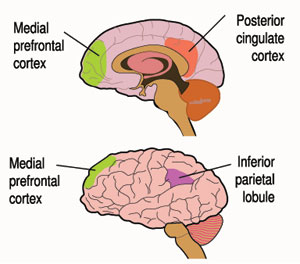Sunday Times 2
Vipassana meditation and neuroscience
View(s):By Dr Channa Ratnatunga
The tools to study the brain are much more advanced than once upon a time when bumps on the head (called Phrenology) and Behaviorism, were only available. Electroencephalography, CT Scans, fMRI Scans, Positron Emission Tomography (PET) Scans, Magneto-encephalography (MEG), and now the Harvard, Washington, and Minnesota Universities’ Human Connectome Project–leading to Tractography, all in the 21st century, the situation has taken a quantum leap.

Pic courtesy Wallpaperflare.com
These ‘tools’ have enabled Neuroscientists to both locate the areas that become active in the brain and to some degree, their connections to other areas when certain mental activities are undertaken by healthy individuals. The networks, i.e. Default Mode Network (DMN), the Central Executive Network (CEN) and six other networks have been identified by them.
More than 1000 peer-reviewed articles on this subject related to Buddhist meditation have appeared in the international scientific literature in the last two decades. This article is written to update those not yet initiated into the current state of this subject.
The 14th Dalai Lama, working with the Waisman Laboratory at the University of Wisconsin, Madison, USA, brought Tibetan Buddhist monks with over 10,000 hours of meditative experience to have their brains scanned with the above-mentioned ‘tools’ while meditating. These studies have unravelled the structural and functional changes in the brain that accompany prolonged Vipassana meditation.
What the scans showed is insightful to the Millennial brought up as he or she is on ‘evidence based’ information.
Diagrammatic view of the Default Mode Network
That the neuro-plastic construct, ‘the Self-referenced thought (i.e. the voice in your head –you call I’) arises mostly in the left hemisphere of the brain and that too in the Default Mode Network (DMN) (See Fig) at a tissue level. It is responsible for rumination – papanca of the past and the worry about the future during the day and night when asleep. Task-related activity switches the brain to the Central Executive Network (CEN). The two networks are mutually exclusive (i.e. don’t work together). The dominant use of the DMN, results in enhanced Neuroplasticity of this network. The appropriate structural and functional changes in the brain have been established by neuroscientists.
The Buddha when asked about the truth of Anatta remained silent. As an ever-changing I, ‘Atta or self’, he probably realised (i.e. the neuroplastic construct) did, in fact, exist. The Buddha showed what existed was the link to Dependent Origination (Paticca Samuppada), leading to Craving (Tanha), Conceit (Manas) and wrong views (Ditthi) of the DMN, responsible for the survival and procreative-based existence of an I. The latter is responsible for the creation of Kamma to achieve these stated ends.
Vipassana meditation has been shown to inhibit the DMN and allow the CEN to take centre stage. Living in the present moment attenuates the DMN and persistent Vipassana meditation encourages neuroplasticity of the auto-regulatory tracts located in the Prefrontal cortex of the CEN which inhibits, the DMN to become continuously active. The resulting mental State so evolved to then become a Trait, leading to the ability to remain in the Vipassana meditative state or not revert to the DMN during their life from then on.

